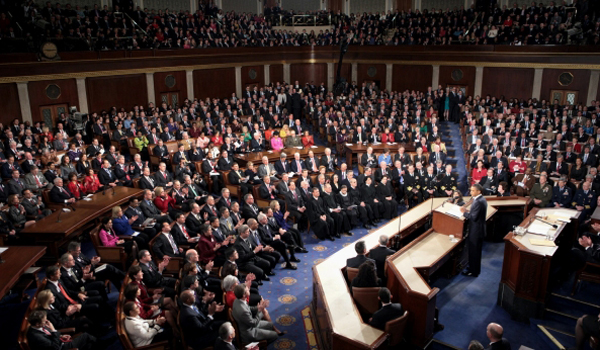What Did Obama's Body Language Say During the State of the Union Address?

Sweeping rhetoric and poignant metaphors can get a politician pretty far. At some point, though, body movements and gestures kick in to help cement a point in viewers' minds, sometimes more so than words do. So what did President Barack Obama's posture and gestures tell us during last night's State of the Union address?
Life's Little Mysteries asked Karen Studd, a body language expert, media consultant and associate professor of dance at George Mason University to analyze the president's address. She said that while Obama displayed many familiar patterns, he also relied heavily on one gesture: "He kept repeating a gesture of interlacing fingers and coming back to center."
Studd said that the president often punctuated a point with one or both hands, then brought his hands together "grounding himself and coming to a sense of resolve" and interlaced his fingers. "This really fits with one of the themes of the evening the idea of coming together and centering," she said.
Obama's speech embraced many ideas, from "winning the future" to strengthening innovation and education. Studd said that his speaking style sought to showcase various types of leadership. "He started off speaking like a coach, then moved to a professor explanatory mode, and ended up closer to a southern preacher at the end, trying to be inspirational." Obama is known for a style of speaking that is more flexible and broad than other political leaders. Sen. John McCain (R-Ariz.), Studd noted as an example, is known for his solid, steady speaking style which can also be seen by some as rigid.
In the end, much depends on who is watching. "What we see is what we get," Studd told Life's Little Mysteries. "But how we interpret that is partially our own worldview." Obama's interlacing gesture might indicate a signal of compromise to one person, while it demonstrates a forced joining to another.
Body language analysis is often used as a tool for political campaigns. Studies have shown that if there is a conflict between what someone says and what their nonverbal language shows, people usually default to trusting the nonverbal signals. "By looking at detail and looking at big picture, you get better associations," Studd said. It turns out that actions really do speak louder than words.
- Body Language and Political Hand Gestures
- Body Language Reveals Wealth
- Would You Make a Good White House Chief of Staff?
Got a question? Send us an email and we'll look for an expert who can crack it.
Sign up for the Live Science daily newsletter now
Get the world’s most fascinating discoveries delivered straight to your inbox.
Follow Katharine Gammon on Twitter @kategammon










